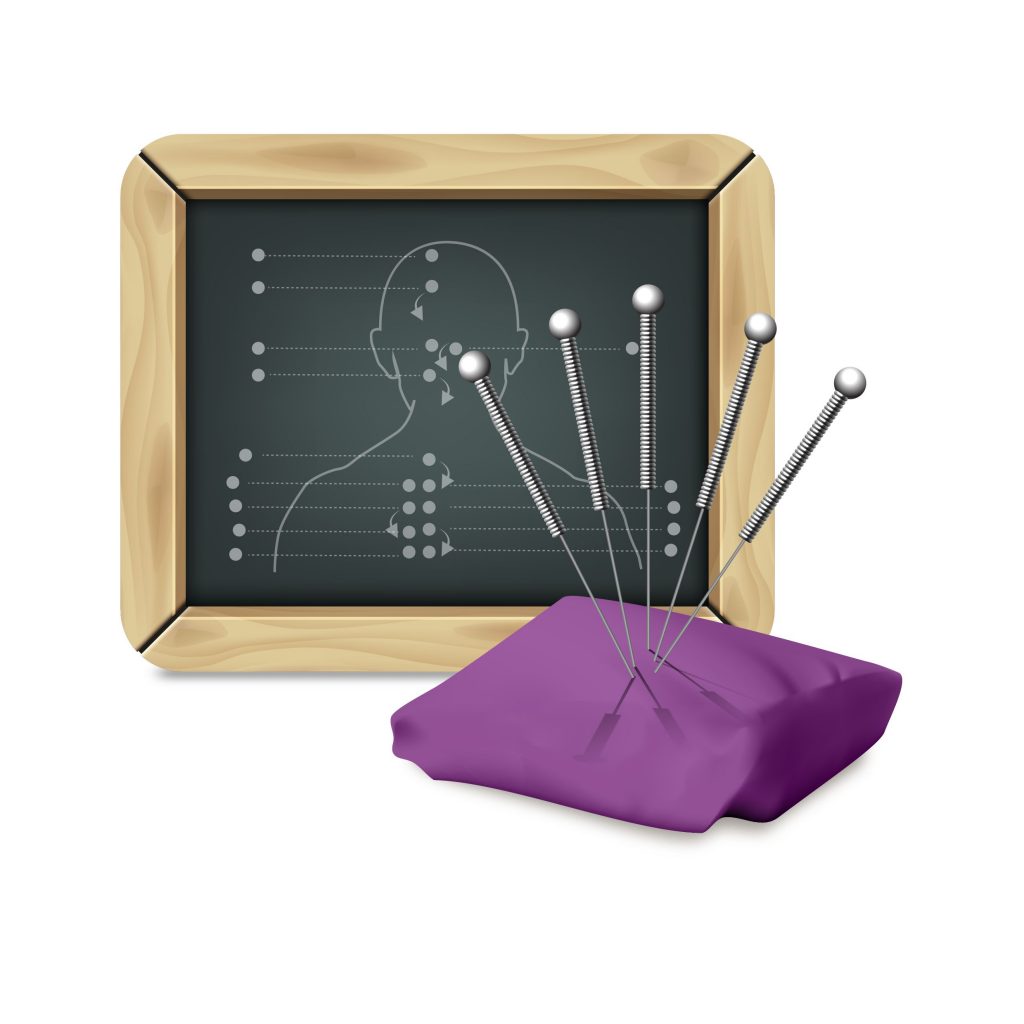Acupuncture and dry needling both involve needle therapy to treat pain, but they’re very different practices. To clarify the differences, we’ve outlined the two therapies below.
Acupuncture, a 5000-year-old practice, originating in China and certified as Traditional Chinese Medicine. A form of alternative or complimentary medicine, acupuncture requires fine needles to be inserted into specific pathways along the body called meridians. Acupuncturists believe chi runs through the body via 12 meridian pathways that are linked to internal organs. Fine needles are inserted at points along these pathways to redirect the flow of the energy, which then alleviates pain, stress and tension. Needles are left in the body for up to half an hour. Mental illness and physical conditions can be treated by acupuncture and it is often used in conjunction with other holistic approaches such as cupping, Chinese herbal medicine and Western medicine.
Dry needle therapy, on the other hand involves muscle stimulation to treat muscle pain. It is based on the principles of Western medicine. As the name suggests, physiotherapists do not insert agents such as saline or cortisone into the body during dry needling – the needles are dry.
Dry needling is a modern treatment. The first recorded dry needling technique was in 1942, and then again in 1979 by Dr Karl Lewit in Czechoslovakia. Suitable for treating a range of musculoskeletal problems including back and neck pain, shoulder and arm pain, some headaches and migraines, hamstrings, sciatica and calf tightness to name a few.
There are two categories of dry needling-superficial dry needling and deep dry needling. As the name implies, superficial dry needling does not reach the myofascial trigger points and is painless.
With deep dry needling the needle goes directly into the myofascial trigger points, eliciting a twitch response, similar to what occurs when the knots are palpated. The twitch response shows that the needle has reached the knot and pain is reduced or relieved immediately.
Deep dry needling may trigger a person’s referred pain. For example, dry needling of myofascial trigger points in the upper trapezius (upper back) or sternocleidomastoid muscles (at the side of the neck) may trigger the patient’s migraine.
The needles relax the muscle, and over a course of treatment, can permanently reduce pain experienced.
Unlike acupuncture, needles are inserted into the muscle, gently moved around by the physiotherapist and removed after a very short time. Patients describe a twitch or electric shock sensation after the needle is inserted. After the needle has been inserted, manipulated and removed, patients feel relaxed.
It should be noted that discomfort may be experienced for a few hours and up to two days after dry needling treatment. Most patients experience a greater sense of wellbeing and energy after dry needling treatment and mobility is increased and pain is reduced.
Several treatments are needed before pain is significantly or completely alleviated as often trigger points are located deep under layers of muscle so it can take several sessions for the muscle to relax, knots to release and pain to reduce.
Whilst many doctors recommend dry needling treatment as one of the first treatments for pain, the dry needling therapy doesn’t suit everyone and patients are screened before beginning therapy.
Some medical conditions such as infectious diseases, immune disorders and skin problems are contraindicated for this procedure. Some may not treat patients on blood thinners.
If you live or work near Brisbane CBD and would like to discuss dry needling therapy with one of our physiotherapists, you can contact us or alternatively give the clinic a call on (07) 3012 7294.


